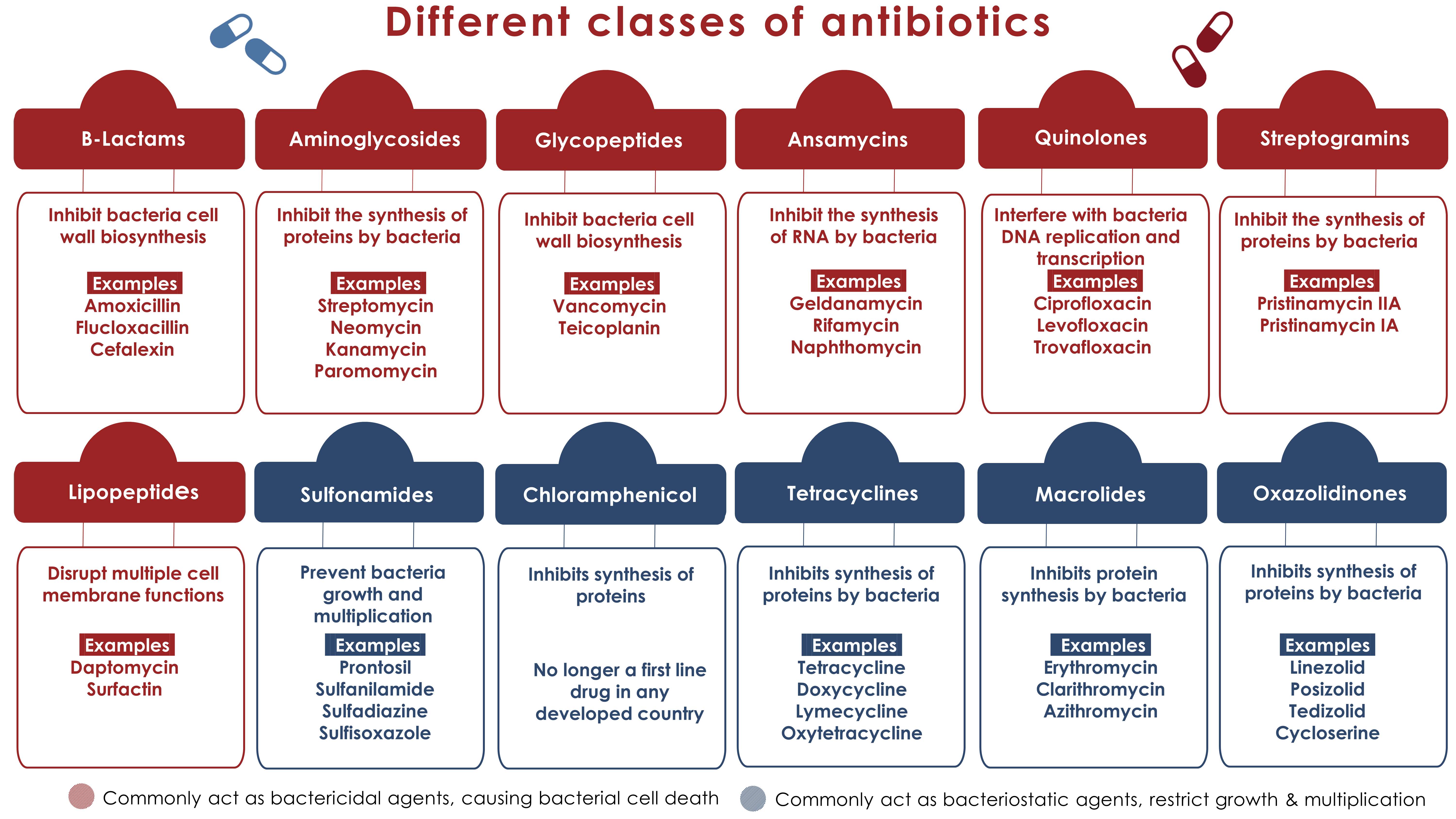Antibiotics disrupt essential processes or structures in the bacterial cell. This either kills the bacterium or slows down bacterial growth. Depending on these effects an antibiotic is said to be bactericidal or bacteriostatic.
Bactericidal and bacteriostatic antibiotics
A bactericidal antibiotic kills the bacteria while the bacteriostatic antibiotics stop bacterial growth without killing them. The human immune system is then needed to clear the infection.
Antibiotic targets in bacteria
There are several classes of antibiotics with different mechanisms of action and bacterial targets. In principal, there are three main antibiotic targets in bacteria:
- The cell wall or membranes that surrounds the bacterial cell
- The machineries that make the nucleic acids DNA and RNA
- The machinery that produce proteins (the ribosome and associated proteins)
These targets are absent or structurally different in human and mammalian cells, which means that antibiotics usually do not harm our cells. However, antibiotics can in some cases have unpleasant side effects. Read more under Why should I care? – Risks for the individual and society.
Narrow-spectrum and broad-spectrum antibiotics
Antibiotics can either have a narrow or broad spectrum of activity. Narrow-spectrum antibiotics are more specific and are only active against certain groups or strains of bacteria. Broad-spectrum antibiotics instead inhibit a wider range of bacteria. Narrow-spectrum antibiotics are generally preferable since the effect on other non-disease causing bacteria is more limited. Unfortunately, broad-spectrum antibiotics are often used since it can be difficult for doctors to diagnose the infectious agent due to a lack of training and/or available diagnostic tools. For more information, see How did we end up here – Use and inappropriate use – In human medicine.
See also these selected resources for more details on different antibiotics and their mechanisms of action.
Selected Resources
| Resource | Description |
| Eric’s Medical Lectures: Mechanisms and classification of antibiotics | Video. Narrated lecture about antibiotics and their mechanism of action (24 min, YouTube). |
| How antibiotics work | Video. Short video describing the difference between bacteriostatic and bactericidal antibiotics. Outlines why antibiotics are not effective against viruses (3 min, YouTube). |
| A brief overview of classes of antibiotics | Fact sheet. Short description of different classes of antibiotics and their mode of action. |
| Antibiotics and bacterial resistance in the 21st century | Journal article with short descriptions of clinically used antibiotic classes as well as examples of bacterial resistance mechanisms. |
| Antimicrobial Resistance Learning Site – Pharmacology | Educational material. Learn about concepts related to medical use of antimicrobials and of resistance. |
More from "Antibiotics"
- How do antibiotics work?
- History of antibiotic development

